
Sir Edwin Henry Landseer Painting Reproductions 1 of 4
1802-1873
English Romanticism Painter
Sir Edwin Henry Landseer (1802-1873) was an English painter, known for his depictions of animals, particularly dogs, horses, and stags. He was one of the most popular and successful artists of his time, and his works remain popular to this day.
Landseer was born in London on March 7, 1802, the son of John Landseer, a well-known engraver and painter. He showed a talent for drawing at an early age and was encouraged by his father to pursue art. He began exhibiting his work at the Royal Academy when he was just 13 years old.
In 1824, Landseer achieved his first major success with his painting "The Larder Invaded," which depicted a group of dogs raiding a kitchen. The painting was purchased by the Marquess of Stafford, and Landseer was awarded a commission to paint a portrait of the Marquess's son and daughter-in-law.
Over the next few decades, Landseer became known for his paintings of animals, particularly dogs and horses. He had a great talent for capturing the character and personality of his animal subjects, and his paintings often had a strong emotional impact on viewers.
In 1850, Landseer was knighted by Queen Victoria, who was a great admirer of his work. He continued to paint and exhibit his work until his death in 1873. Some of his most famous works include "The Monarch of the Glen," "Dignity and Impudence," and "The Arab Tent."
In addition to his paintings, Landseer was also an accomplished sculptor. He created the bronze lions that flank the base of Nelson's Column in Trafalgar Square, and his statue of a stag stands in the grounds of the Scottish National Gallery in Edinburgh.
Landseer's work remains popular today, and his paintings and sculptures are held in collections around the world. He is remembered as one of the greatest animal painters of all time, and his legacy continues to inspire artists today.
Landseer was born in London on March 7, 1802, the son of John Landseer, a well-known engraver and painter. He showed a talent for drawing at an early age and was encouraged by his father to pursue art. He began exhibiting his work at the Royal Academy when he was just 13 years old.
In 1824, Landseer achieved his first major success with his painting "The Larder Invaded," which depicted a group of dogs raiding a kitchen. The painting was purchased by the Marquess of Stafford, and Landseer was awarded a commission to paint a portrait of the Marquess's son and daughter-in-law.
Over the next few decades, Landseer became known for his paintings of animals, particularly dogs and horses. He had a great talent for capturing the character and personality of his animal subjects, and his paintings often had a strong emotional impact on viewers.
In 1850, Landseer was knighted by Queen Victoria, who was a great admirer of his work. He continued to paint and exhibit his work until his death in 1873. Some of his most famous works include "The Monarch of the Glen," "Dignity and Impudence," and "The Arab Tent."
In addition to his paintings, Landseer was also an accomplished sculptor. He created the bronze lions that flank the base of Nelson's Column in Trafalgar Square, and his statue of a stag stands in the grounds of the Scottish National Gallery in Edinburgh.
Landseer's work remains popular today, and his paintings and sculptures are held in collections around the world. He is remembered as one of the greatest animal painters of all time, and his legacy continues to inspire artists today.
73 Landseer Paintings
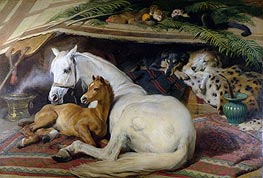
The Arab Tent 1866
Oil Painting
$1103
$1103
Canvas Print
$51.73
$51.73
SKU: LEH-824
Sir Edwin Henry Landseer
Original Size: 153.6 x 226.4 cm
The Wallace Collection, London, United Kingdom
Sir Edwin Henry Landseer
Original Size: 153.6 x 226.4 cm
The Wallace Collection, London, United Kingdom
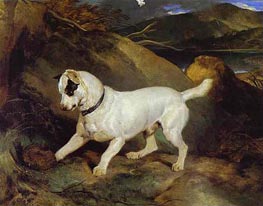
Jocko with a Hedgehog 1828
Oil Painting
$950
$950
SKU: LEH-825
Sir Edwin Henry Landseer
Original Size: unknown
Milwaukee Art Museum, Wisconsin, USA
Sir Edwin Henry Landseer
Original Size: unknown
Milwaukee Art Museum, Wisconsin, USA
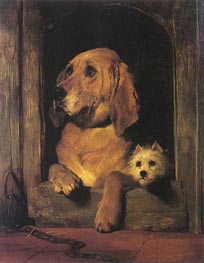
Dignity and Impudence 1839
Oil Painting
$947
$947
Canvas Print
$50.59
$50.59
SKU: LEH-826
Sir Edwin Henry Landseer
Original Size: 88.9 x 69.2 cm
Tate Gallery, London, United Kingdom
Sir Edwin Henry Landseer
Original Size: 88.9 x 69.2 cm
Tate Gallery, London, United Kingdom
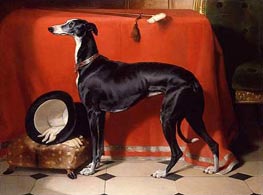
Eos, A Favorite Greyhound of Prince Albert 1841
Oil Painting
$1004
$1004
Canvas Print
$57.30
$57.30
SKU: LEH-827
Sir Edwin Henry Landseer
Original Size: 111.8 x 142.9 cm
The Royal Collection, London, United Kingdom
Sir Edwin Henry Landseer
Original Size: 111.8 x 142.9 cm
The Royal Collection, London, United Kingdom
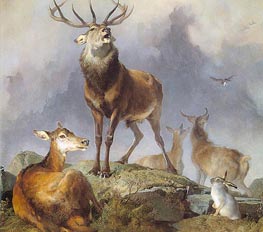
Scene in Braemar - Highland Deer 1857
Oil Painting
$1134
$1134
SKU: LEH-828
Sir Edwin Henry Landseer
Original Size: unknown
Private Collection
Sir Edwin Henry Landseer
Original Size: unknown
Private Collection
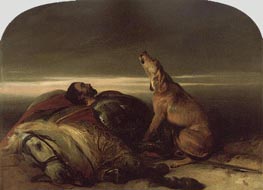
The Faithful Hound c.1830
Oil Painting
$1194
$1194
Canvas Print
$58.42
$58.42
SKU: LEH-829
Sir Edwin Henry Landseer
Original Size: 68.4 x 91.2 cm
Royal Academy of Arts, London, United Kingdom
Sir Edwin Henry Landseer
Original Size: 68.4 x 91.2 cm
Royal Academy of Arts, London, United Kingdom
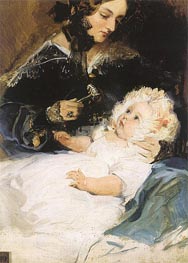
The Duchess of Abercorn and her Daughter 1834
Oil Painting
$697
$697
SKU: LEH-2906
Sir Edwin Henry Landseer
Original Size: unknown
Shugborough Hall, Staffordshire, United Kingdom
Sir Edwin Henry Landseer
Original Size: unknown
Shugborough Hall, Staffordshire, United Kingdom
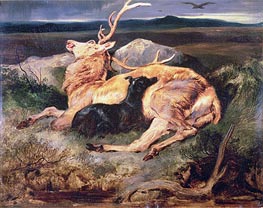
Stag n.d.
Oil Painting
$1069
$1069
Canvas Print
$83.00
$83.00
SKU: LEH-7569
Sir Edwin Henry Landseer
Original Size: unknown
Private Collection
Sir Edwin Henry Landseer
Original Size: unknown
Private Collection
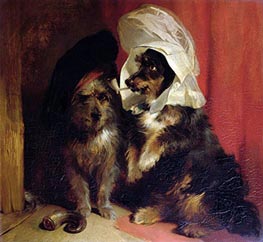
Comical Dogs 1836
Oil Painting
$1057
$1057
Canvas Print
$102.06
$102.06
SKU: LEH-7570
Sir Edwin Henry Landseer
Original Size: 69.8 x 76.2 cm
Victoria and Albert Museum, London, United Kingdom
Sir Edwin Henry Landseer
Original Size: 69.8 x 76.2 cm
Victoria and Albert Museum, London, United Kingdom
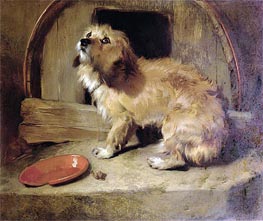
There's No Place Like Home n.d.
Oil Painting
$974
$974
Canvas Print
$50.59
$50.59
SKU: LEH-7571
Sir Edwin Henry Landseer
Original Size: unknown
Victoria and Albert Museum, London, United Kingdom
Sir Edwin Henry Landseer
Original Size: unknown
Victoria and Albert Museum, London, United Kingdom
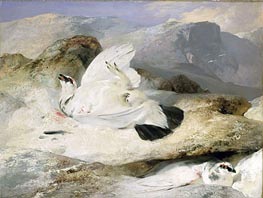
Ptarmigan in a Landscape 1833
Oil Painting
$1103
$1103
Canvas Print
$57.72
$57.72
SKU: LEH-7572
Sir Edwin Henry Landseer
Original Size: 49.5 x 65.4 cm
Philadelphia Museum of Art, Pennsylvania, USA
Sir Edwin Henry Landseer
Original Size: 49.5 x 65.4 cm
Philadelphia Museum of Art, Pennsylvania, USA
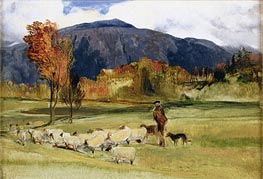
A Shepherd and his Flock n.d.
Oil Painting
$864
$864
Canvas Print
$62.36
$62.36
SKU: LEH-7573
Sir Edwin Henry Landseer
Original Size: unknown
Private Collection
Sir Edwin Henry Landseer
Original Size: unknown
Private Collection
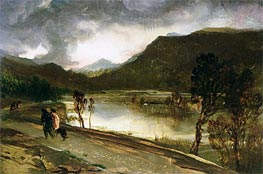
A Highland Loch n.d.
Oil Painting
$793
$793
Canvas Print
$50.59
$50.59
SKU: LEH-7574
Sir Edwin Henry Landseer
Original Size: unknown
Private Collection
Sir Edwin Henry Landseer
Original Size: unknown
Private Collection
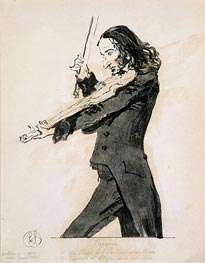
Niccolo Paganini Playing the Violin 1831
Paper Art Print
$48.29
$48.29
SKU: LEH-7575
Sir Edwin Henry Landseer
Original Size: 27.5 x 21.5 cm
Private Collection
Sir Edwin Henry Landseer
Original Size: 27.5 x 21.5 cm
Private Collection
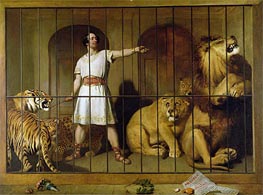
Portrait of Mr Van Amburgh as he Appeared with ... 1847
Oil Painting
$2114
$2114
Canvas Print
$56.19
$56.19
SKU: LEH-7576
Sir Edwin Henry Landseer
Original Size: 175.5 x 238.5 cm
Yale Center for British Art, Connecticut, USA
Sir Edwin Henry Landseer
Original Size: 175.5 x 238.5 cm
Yale Center for British Art, Connecticut, USA
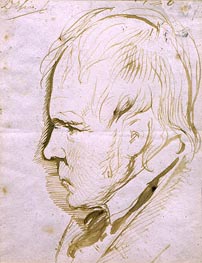
Portrait Sketch of Sir Walter Scott 1867
Paper Art Print
$48.29
$48.29
SKU: LEH-7577
Sir Edwin Henry Landseer
Original Size: 43.8 x 28.3 cm
Private Collection
Sir Edwin Henry Landseer
Original Size: 43.8 x 28.3 cm
Private Collection
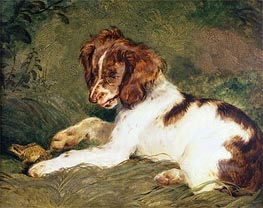
A Puppy teasing a Frog 1824
Oil Painting
$1054
$1054
Canvas Print
$50.59
$50.59
SKU: LEH-7578
Sir Edwin Henry Landseer
Original Size: 35.5 x 44.5 cm
Harris Museum and Art Gallery, Preston, United Kingdom
Sir Edwin Henry Landseer
Original Size: 35.5 x 44.5 cm
Harris Museum and Art Gallery, Preston, United Kingdom
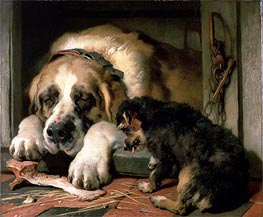
Doubtful Crumbs c.1858/59
Oil Painting
$1068
$1068
Canvas Print
$63.16
$63.16
SKU: LEH-7579
Sir Edwin Henry Landseer
Original Size: 63.4 x 75.9 cm
The Wallace Collection, London, United Kingdom
Sir Edwin Henry Landseer
Original Size: 63.4 x 75.9 cm
The Wallace Collection, London, United Kingdom
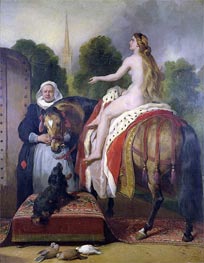
Lady Godiva's Prayer c.1865
Oil Painting
$1793
$1793
Canvas Print
$59.40
$59.40
SKU: LEH-7580
Sir Edwin Henry Landseer
Original Size: 143 x 113 cm
Herbert Art Gallery and Museum, Coventry, United Kingdom
Sir Edwin Henry Landseer
Original Size: 143 x 113 cm
Herbert Art Gallery and Museum, Coventry, United Kingdom
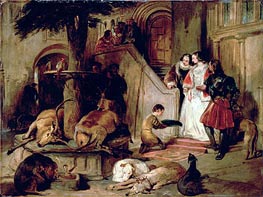
A Courtyard in Olden Times c.1834
Canvas Print
$67.30
$67.30
SKU: LEH-7581
Sir Edwin Henry Landseer
Original Size: 45 x 59 cm
Private Collection
Sir Edwin Henry Landseer
Original Size: 45 x 59 cm
Private Collection
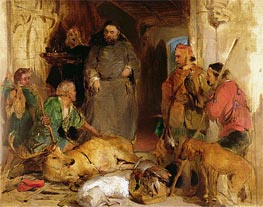
A Study for Bolton Abbey in the Olden Time c.1834
Canvas Print
$50.59
$50.59
SKU: LEH-7582
Sir Edwin Henry Landseer
Original Size: 32 x 40.5 cm
Private Collection
Sir Edwin Henry Landseer
Original Size: 32 x 40.5 cm
Private Collection
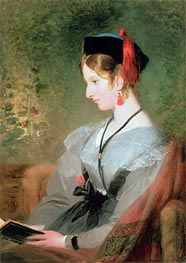
Portrait of Elizabeth Wells, Lady Dyke n.d.
Oil Painting
$1021
$1021
SKU: LEH-7583
Sir Edwin Henry Landseer
Original Size: unknown
Private Collection
Sir Edwin Henry Landseer
Original Size: unknown
Private Collection
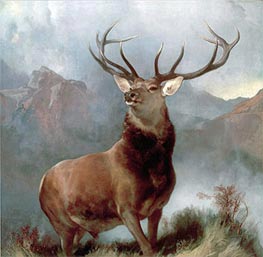
Monarch of the Glen 1851
Oil Painting
$1285
$1285
Canvas Print
$74.45
$74.45
SKU: LEH-7584
Sir Edwin Henry Landseer
Original Size: 163.8 x 169 cm
Private Collection
Sir Edwin Henry Landseer
Original Size: 163.8 x 169 cm
Private Collection
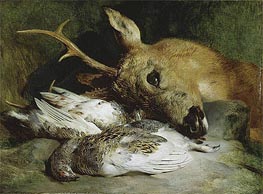
Head of a Roebuck and Two Ptarmigan c.1830
Oil Painting
$1044
$1044
Canvas Print
$50.59
$50.59
SKU: LEH-7585
Sir Edwin Henry Landseer
Original Size: 22.5 x 30.4 cm
Art Institute of Chicago, Illinois, USA
Sir Edwin Henry Landseer
Original Size: 22.5 x 30.4 cm
Art Institute of Chicago, Illinois, USA